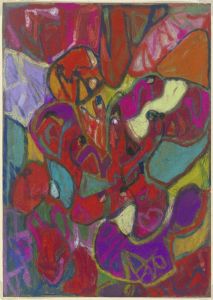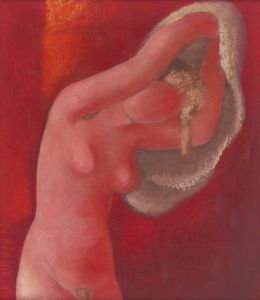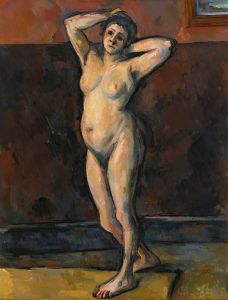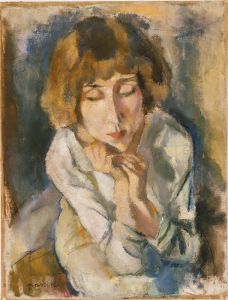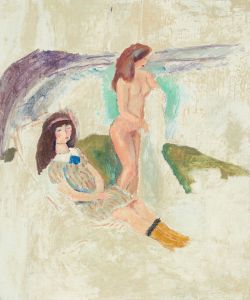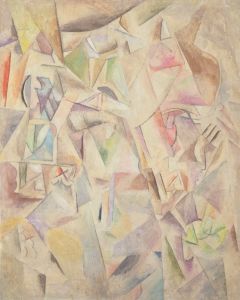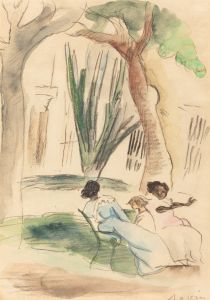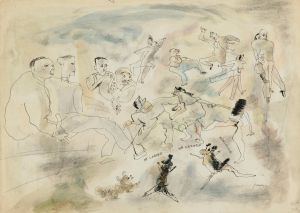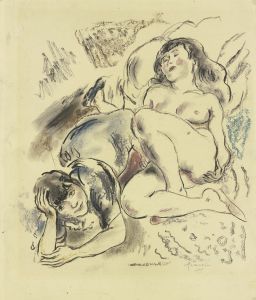
Portrait d’une femme debout
A hand-painted replica of Jules Pascin’s masterpiece Portrait d’une femme debout, meticulously crafted by professional artists to capture the true essence of the original. Each piece is created with museum-quality canvas and rare mineral pigments, carefully painted by experienced artists with delicate brushstrokes and rich, layered colors to perfectly recreate the texture of the original artwork. Unlike machine-printed reproductions, this hand-painted version brings the painting to life, infused with the artist’s emotions and skill in every stroke. Whether for personal collection or home decoration, it instantly elevates the artistic atmosphere of any space.
"Portrait d’une femme debout" is a painting by Jules Pascin, a Bulgarian-born artist who became a significant figure in the early 20th-century art world. Pascin, whose real name was Julius Mordecai Pincas, was born on March 31, 1885, in Vidin, Bulgaria, and later moved to Paris, where he became associated with the Montparnasse art scene. He is often remembered for his contributions to the School of Paris, a group of artists who were active in the French capital during the early 1900s.
The painting "Portrait d’une femme debout" (translated as "Portrait of a Standing Woman") is characteristic of Pascin's style, which often depicted delicate, intimate, and sometimes melancholic figures, primarily women. His works are known for their loose, fluid brushstrokes and a subtle use of color, which convey a sense of immediacy and emotional depth.
In "Portrait d’une femme debout," Pascin captures the essence of his subject with a sense of grace and sensitivity. The woman in the painting is depicted standing, as the title suggests, and her posture and expression reflect a quiet introspection. The background is typically understated, allowing the viewer's focus to remain on the figure. Pascin's use of light and shadow adds a three-dimensional quality to the portrait, enhancing the realism while maintaining an impressionistic touch.
Pascin's life was marked by his bohemian lifestyle and his struggles with depression. Despite his personal challenges, he was a prolific artist, producing numerous drawings, watercolors, and oil paintings. His works often explored themes of femininity, vulnerability, and the human condition, making him a poignant observer of the world around him.
"Portrait d’une femme debout" is one of many portraits by Pascin that exemplify his ability to capture the subtleties of human emotion and form. His works were well-received during his lifetime, and he exhibited in various prestigious galleries and salons. Pascin's art continues to be celebrated for its unique blend of technical skill and emotional resonance.
Jules Pascin's legacy is also marked by his tragic end; he committed suicide on June 5, 1930, in Paris. His death was a significant loss to the art community, but his work has endured, continuing to be studied and appreciated by art historians and enthusiasts alike.
"Portrait d’une femme debout" remains a testament to Pascin's talent and his ability to convey the complexities of the human spirit through his art. The painting is a valuable piece within the broader context of early 20th-century art, reflecting the stylistic and thematic concerns of the period while also offering a personal glimpse into the artist's world.






